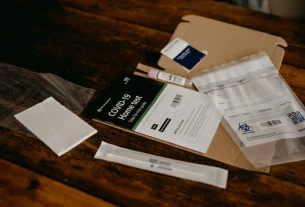Estimated Reading Time: 7 minutes
Estimated Reading Time: 7 minutes
II today’s world, we’re constantly bombarded with toxins – in our food, our environment, and even our personal care products.
But what if there was a way to significantly reduce our exposure and unlock a healthier, more vibrant version of ourselves?
That’s the core concept behind the benefits of living a low-tox life.
It’s not about perfection; it’s about making conscious choices that minimize your exposure to harmful chemicals and prioritize your well-being.
And the good news? The rewards are well worth the effort.
This journey towards a less toxic lifestyle isn’t about a complete overhaul overnight.
It’s about gradually integrating healthier habits and becoming more mindful of the products and practices we embrace daily.
I remember when I first started, it felt overwhelming. Where do I even begin?
But by focusing on small, manageable steps, I soon found myself reaping the benefits of living a low-tox life, both physically and mentally.
The advantages of opting for a lower-tox approach are multifaceted and far-reaching. It touches every aspect of your health and well-being.
Let’s delve into some of the most significant areas where you can expect positive changes:
One of the most immediately noticeable benefits of living a low-tox life is a boost in physical health.
Think about it: by reducing your exposure to harmful chemicals, you’re giving your body a much-needed break.
This can translate into a stronger immune system, reduced inflammation, and a decreased risk of chronic diseases.
I’ve personally experienced a significant reduction in persistent headaches and improved digestion since I started paying attention to the products I use and the food I consume.
Switching to organic foods, for instance, can significantly reduce your exposure to pesticides and herbicides, known toxins that can wreak havoc on your system.
Consider this a gentle reset, allowing your body’s natural detoxification processes to function more efficiently.
When your body isn’t constantly fighting off toxins, it has more energy to dedicate to self-repair and overall health.
It’s like trading in a clunky, inefficient engine for a finely tuned one.
The benefits of living a low-tox life aren’t limited to your physical state.
Many individuals report enhanced mental clarity and focus when they adopt a lower-tox approach.
Exposure to certain chemicals can affect cognitive function, leading to brain fog, difficulty concentrating, and even mood swings.
By minimizing these exposures, you’re essentially clearing the pathways in your brain, making it easier for you to think clearly and process information.
This is where the food you eat comes into play again.
Processed foods often contain additives and preservatives that can negatively impact brain function.
Embracing whole, unprocessed foods, rich in nutrients, provides your brain with the fuel it needs to perform at its best.
I find that on days when I eat a clean diet, my productivity soars, and I feel far less stressed.
Who doesn’t want glowing, healthy skin?
Another one of the most noticeable benefits of living a low-tox life is a significant improvement in skin health.
Many conventional skincare and cosmetic products are loaded with chemicals that can irritate the skin, clog pores, and even contribute to premature aging.
By switching to natural, non-toxic alternatives, you’re giving your skin the chance to breathe and thrive.
Consider this your beauty shortcut.
By simply swapping out your regular products for safer options, you’ll likely notice a reduction in breakouts, redness, and other skin irritations.
Plus, many natural products are packed with antioxidants and other beneficial ingredients that actively nourish and protect your skin.
Start by examining the ingredients in your current products. Many are surprisingly simple to replace with more natural versions.
Embracing a low-tox lifestyle is not just about personal health; it’s also about environmental responsibility.
By choosing products with fewer harmful chemicals, you’re minimizing your contribution to pollution and reducing your impact on the planet.
This is one of the less discussed, but no less important, benefits of living a low-tox life.
For example, opting for biodegradable cleaning products reduces the toxic load that gets released into our waterways.
Choosing reusable alternatives to single-use plastics minimizes waste and pollution.
Every conscious choice we make can contribute to a healthier, more sustainable future.
Remember, the choices you make today can have positive ripple effects far beyond yourself.
So, how do you begin to experience these amazing benefits of living a low-tox life?
The good news is, it doesn’t require a complete lifestyle overhaul. Here are a few practical tips to get you started:
Personal Tip: One trick I found incredibly helpful when transitioning was to replace one product at a time.
This helps prevent overwhelm and makes it easier to stick with the changes.
Consider making your own all-purpose cleaner.
You can combine vinegar, water, and a few drops of essential oils (like lemon or tea tree) in a spray bottle.
This is a simple and effective alternative to harsh chemical cleaners.
Dr.
Sarah Jones, a leading expert in environmental medicine, states, “The accumulation of toxins in our bodies can contribute to a wide range of health issues.
Embracing a low-tox lifestyle is a powerful step toward supporting our body’s natural detoxification processes and promoting optimal health.”
The benefits of living a low-tox life extend far beyond immediate improvements.
By making these conscious choices, you’re investing in your long-term health and well-being.
It’s an ongoing journey, not a destination, and the positive changes you’ll experience will make it a worthwhile one.
Ultimately, the aim is to create an environment where you thrive – physically, mentally, and emotionally.
And that, in my experience, is the greatest reward of all.
Ready to embark on your own journey to a healthier, less toxic life? Start small, stay consistent, and enjoy the process!
Embracing a low-tox life is a marathon, not a sprint, so be patient with yourself.
Each small change is a victory, and soon you’ll start noticing the profound benefits of living a low-tox life!
Frequently Asked Questions
What are the biggest challenges people face when starting a low-tox lifestyle?
One of the biggest challenges is identifying and replacing existing products. It requires reading labels diligently and becoming aware of the hidden toxins in everyday items like cleaning products and personal care products. Another challenge is navigating the marketing claims of “natural” products, many of which are still loaded with questionable ingredients. The key is to start slowly, research thoroughly, and focus on making gradual, sustainable changes rather than attempting a complete overhaul all at once.
How can I afford to switch to organic foods and products?
Transitioning to a low-tox lifestyle doesn’t have to break the bank. Prioritize the “Dirty Dozen” list – fruits and vegetables with the highest pesticide residue – when buying organic. Cook at home more often, as processed foods tend to be more expensive and loaded with unhealthy ingredients. Look for affordable organic brands and consider bulk buying from health food stores or online retailers. Growing your own herbs and vegetables, even in a small space, can also significantly reduce costs and provide fresh, non-toxic produce.
Are there any specific foods or ingredients I should avoid to minimize toxin exposure?
Yes, some of the most common culprits include heavily processed foods, foods high in added sugar and refined carbohydrates, conventionally raised meats (due to antibiotic use and hormones), and products containing artificial sweeteners, colors, and flavors. Also, be mindful of foods that often have high levels of pesticides, such as strawberries, spinach, and apples (the “Dirty Dozen”). Read ingredient lists carefully, focusing on whole, unprocessed foods as the foundation of your diet.
How long does it take to start seeing the benefits of a low-tox life?
The timeline varies depending on individual circumstances and the extent of the changes you make. Some people notice improvements in energy levels, sleep quality, and skin clarity within a few weeks. Others may experience a more gradual transformation, particularly in areas like hormonal balance or long-term disease prevention. Be patient with yourself. The key is consistency, focusing on making small, sustainable changes that you can maintain over time.
Can living a low-tox life help with specific health problems like allergies or autoimmune conditions?
While it’s not a cure-all, reducing exposure to toxins can often significantly support the management of allergies and autoimmune conditions. Many people find that eliminating or reducing their exposure to environmental toxins and processed foods helps reduce inflammation, which can trigger these conditions. Choosing natural cleaning products and personal care items minimizes skin irritants and potential allergens. Eating a whole food, nutrient-rich diet supports overall health and reduces the burden on the immune system, which can be especially beneficial for those with autoimmune diseases.




